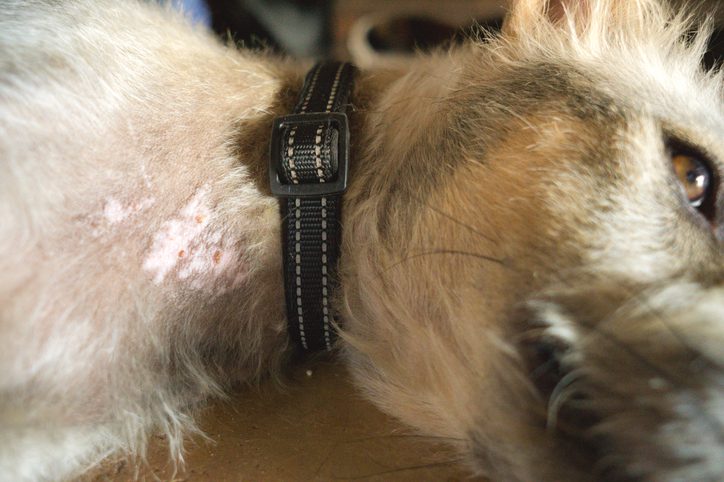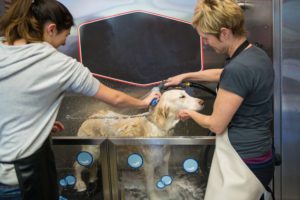Dog Mange in Limerick, PA: Symptoms, Treatment and Prevention
Dog mange is an unsightly condition, and it can cause lasting issues with your dog’s skin and haircoat when not treated. Many people have never seen mange in a dog and have never had to treat it before, but if you rescue an animal or your dog comes into contact with a dog that had it, you might be forced to treat this condition.
Dog mange is usually fairly easy to diagnose since the symptoms are quite easy to spot. Treatment can take time and patience, but most owners are capable of this project, even on their own at home. Preventing mange is easier than treating it, and you should know the steps for keeping your dog free from mange.
If you are ready to learn more about dog mange and its symptoms and prevention, you need to keep reading!
Symptoms of Mange in Dogs
Mange will start showing up anywhere from 10 days to 8 weeks after contact with dogs that are carriers. The first symptoms often appear on the ears and chest, or you might also see signs on the belly and the hind legs.
- Extreme itchiness
- Red skin and a rash
- Thick yellow crusts on the skin
- Hair loss
- Bacterial or yeast infections of the skin
- Thickening of the skin in more advanced cases
- Lymph node inflammation
- Emaciation and lack of appetite
The final three symptoms are present typically only in more advanced cases. Dogs who are diagnosed in the early stages of the condition will usually not present these more severe symptoms. Diagnosis is made by obtaining a skin scraping from the infected animal and looking at it under the microscope. There are two kinds of mange, Sarcoptic Mange, and Demodectic Mange. These conditions are caused by different mites, so diagnosis is critical for successful treatment.

Treatment Options for Dogs with Mange
There are a few different steps to the treatment process including shaving, medicated shampoos, medications, and isolation.
Shaving
One of the first steps in any mange treatment protocol is to trim off the hair that is in the way of scabs and infected areas. It is much easier to remove the mites that are causing the condition if your dog’s hair is not providing them with shelter, and long hair can get stuck in scabs and create infections.
Medicated Shampoos
Once a dog has been shaved, they will need to be dipped to kill the mites and heal the skin. Dip products are basically medicated shampoos that are used to kill mites and to help soothe the skin. This will need to be done at least weekly to help maintain the right conditions for skin healing and to kill any mites that have hatched since the first treatment was done.
Topical and Oral Medications
Mite eradication can be done with topical medications like selamectin and imidacloprid-moxidectin. These are provided by your veterinarian, and you will need to keep to a schedule for applying these mite killers. Your dog might also be given oral medications to treat the infestation.
Isolation
Another important factor for the care of infected animals is keeping them isolated from other pets in the house. If you are not able to prevent the other dogs in your home from being infected, you might be creating a lifecycle for the mites that is hard to break. You will need to successfully treat the infected animal before they can be reintegrated with the other animals in your home.
How to Prevent Your Dog from Getting Mange
Preventing your dog from getting mange can be simple, read below for a few tips.
Limit Contact with Dogs You Don’t Know
Mange prevention is easy if you do not ever come into contact with animals that are strays or that might have become infected with these mites. Dog parks can be a prime location for infection if you live in an area that has a high incidence of these pests. You will also need to be careful that you are not bringing mange home with you if you work in a rescue or at a vet clinic.
Isolating a Dog Going Through Mange Treatment
Most of the treatments that are used for mange will also prevent reinfection for a while, and you can use this as a barrier to creating a household-wide infection issue. When you have a pet that has mange, this animal needs to be kept separate from the other animals in your home until the mites have been successfully treated. Mange is very contagious and can be hard to contain once you have multiple animals with the condition. Humans can also get mange from their pets, so isolating the affected animal is important for this reason as well.
Don’t Let Your Dog Roam
Making sure that your dog is not running loose in the neighborhood is also a big help when trying to prevent mange. Infected animals are almost always strays, and your beloved pet can easily pick up mange from animals it meets when it is out roaming. If your dog has gotten loose and been missing for a time, it is a good idea to wash them with a mange dip as soon as they come home to help control a possible infection.

Dog Mange Can be Managed and Prevented
When you own a pet that lives indoors or lives outside in your yard, you are not likely to have to contend with mange. Animals that are strays might bring this infection into your home or your neighborhood, which is often the primary reason that pets that are well-cared-for can contract mange. Making sure to treat your dog early is critical to controlling the mite infection that causes mange. Take your dog to the veterinarian right away if they are showing symptoms of mange so that you can get an accurate diagnosis of the mite that is causing the condition.
Treating mange can take time and effort, and it is always better to prevent it than to have to treat it. Make sure that your dog is not running loose all the time away from your home and be sure that you are aware of the risk of bringing mange home to your pets if you work in a shelter or a vet clinic. Prevention of mange is easy when you keep your pet in a controlled home environment and when you pay attention to possible risk vectors such as the dog park.
Call Limerick Veterinary Hospital at (610) 489-2848 or book an appointment online to talk with your veterinarian about mange on dogs.
